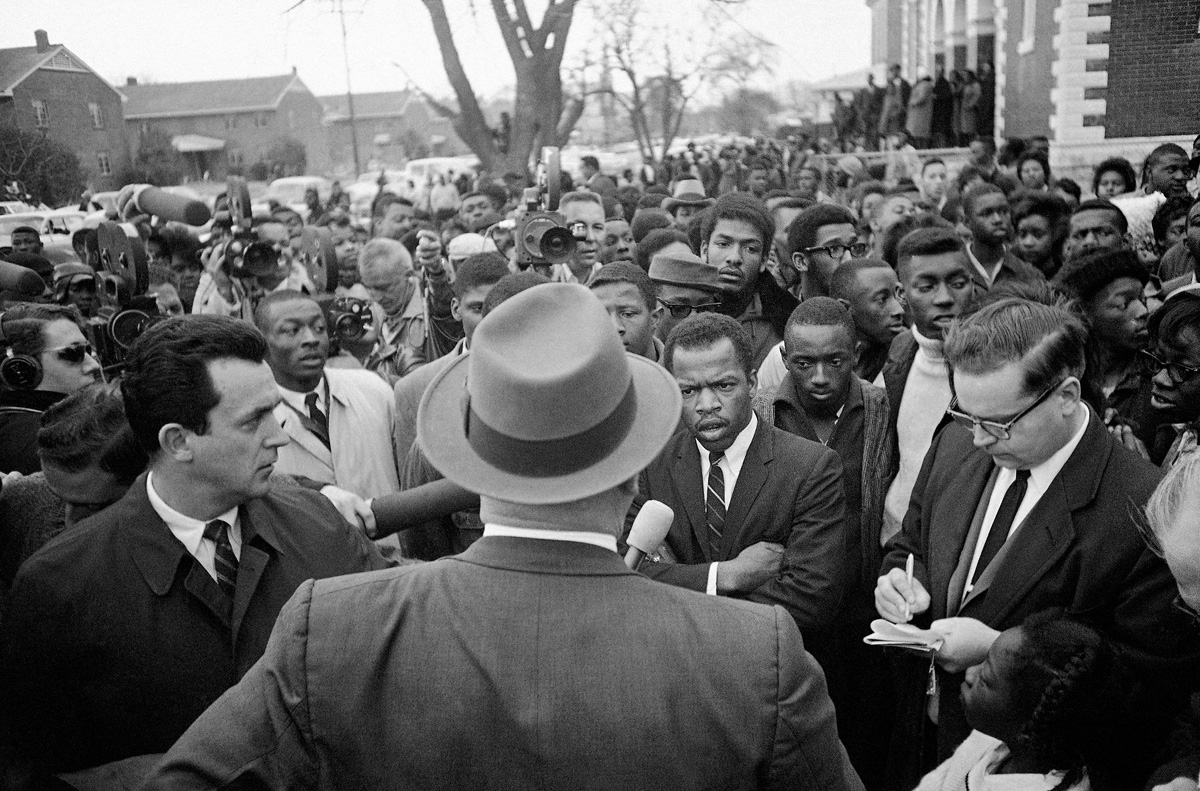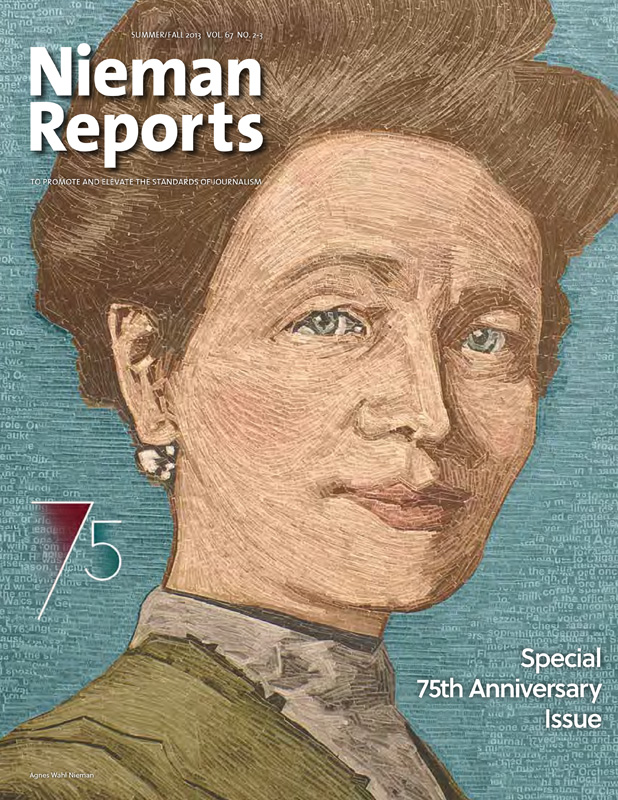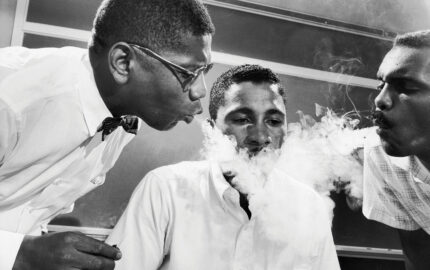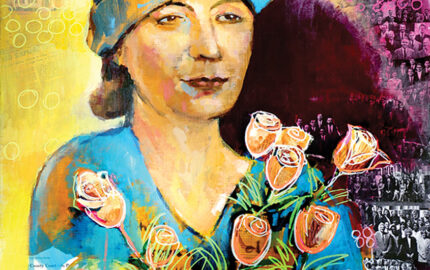The world’s most famous physicist was, on September 9, 1920, just another press critic: “Like the man in the fairy-tale who turned everything he touched into gold,” groused Albert Einstein in a letter to fellow scientist Max Born, “so with me everything turns into a fuss in the newspapers.”
His lament was a familiar one: Journalists, more than a few people believed, either trivialized or sensationalized everything they encountered, reducing complex ideas—such as Einstein’s startling notion that space and time are relative, not absolute—to clever slogans and snappy headlines. Journalists specialized in titillation. They relished celebrity gossip. They adored the flashy, the shallow. They were distracted by shiny baubles. They had, that is, a Kardashian sensibility, long before the word “Kardashian” had flounced and pouted its way into the lexicon.
Sixteen years after Einstein presumably canceled his subscription, the widow of a Midwestern newspaper magnate made a curious and inscrutable decision that was to have a profound impact upon the profession of journalism and, through journalism, upon the world. Agnes Wahl Nieman left $1.4 million—approximately $23 million in today’s dollars—in her will to Harvard University, with the noble-sounding yet murky stipulation that the bequest be used to “promote and elevate the standards of journalism.” This gift enabled the creation of the Nieman Foundation.
In the ensuing three-quarters of a century, the Foundation has awarded 1,442 Nieman Fellowships—929 domestic, 513 international—that bring journalists to Harvard for a year of study and reflection, after which they return to their jobs (most of them, anyway) and do things such as win Pulitzer Prizes, craft code, write books, and generally serve as pitchforks to the profession, pushing and challenging their colleagues ever forward. In recent years the Fellowship program has expanded into innovative offshoots such as the Nieman Journalism Lab, the Nieman Watchdog Project, and Nieman Storyboard, the website dedicated to long-form narrative. Since 1947, the Foundation has published Nieman Reports, one of the first periodicals in the country to explore journalistic practices.
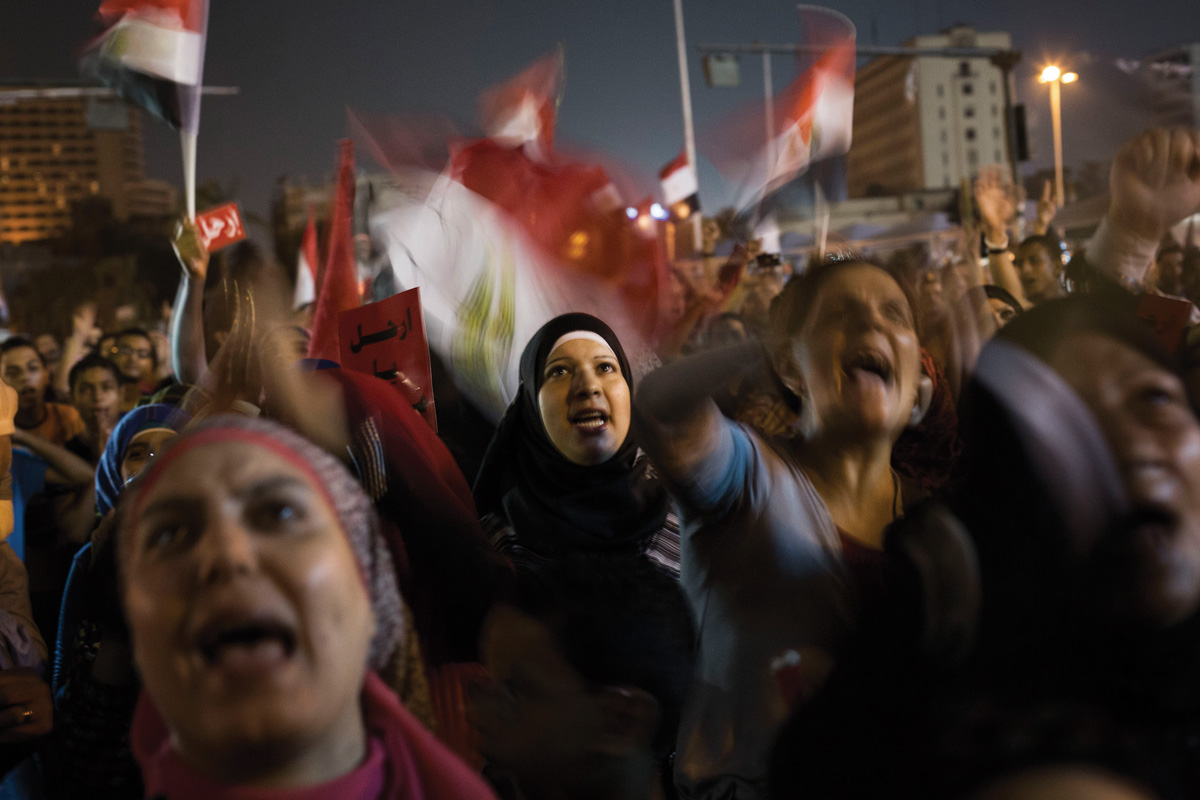
“Journalists dwell in the world of right now. Their basic job is to pin down the present,” says Bill Kovach, curator from 1989 to 2000. “Suddenly they [Nieman Fellows] come to Harvard. They have to think about the long term.”
RELATED ARTICLE
Taking Back Our Language
By Bill Kovach
And they do that thinking in a renowned and exacting intellectual community, a choice of location that initially seemed a bit perverse. When Agnes Wahl Nieman made her wishes known in her will, Harvard had no journalism school, no department of journalism; it still doesn’t. Other fine universities throughout the nation, then and now, have excellent journalism departments. By choosing Harvard as the recipient of her largesse and by designating all journalists as, in effect, her heirs, she may have guessed that she was inviting sarcastic commentary; on some level, perhaps she sensed that her juxtaposition of the world’s foremost university with the messy, irreverent, ragtag world of daily journalism would be catnip to the wags of the day, to the would-be Jon Stewarts. Placing “Harvard” and “journalism” in the same sentence was like putting a top hat on a donkey: Yes, it might provide a touch of elegance, but you’d still have a hard time getting him a seat at the symphony.
The Nieman program is now a global brand, but in the beginning, nobody quite knew how—or even if—it was going to work. James B. Conant, Harvard’s thin-faced, preternaturally nervous president at the time of the bequest, was grateful but skeptical, calling the fellowship idea as it eventually developed a “dubious experiment.”
He turned to Archibald MacLeish, an acclaimed poet and editor as well as an academic, a man who wore his patrician privilege as comfortably as he did his fedora, to get the thing going. As MacLeish recalled in an interview published in Nieman Reports long after his one-year term as curator, many Harvard professors initially were reluctant to let hard-bitten, world-weary journalists into their classes. “Some of them felt, ‘Good God, this man is a reporter, his whole life is spent reporting. I am lecturing on Tennyson and Browning.’?”
To a journalist with a chip on his shoulder, a journalist who’d been around the block a few times, the chance to ridicule the lofty pretentions of a Harvard professor just might prove to be irresistible. Journalists who believed “that Harvard was sort of snooty would have the time of their lives putting together a series of pieces … which might raise hell,” MacLeish said.
It didn’t happen, but when the program first was announced, the apprehension was intense. You could practically see the ivy gripping the walls just a little bit tighter, anticipating the coming storm. And it was, after all, a reasonable concern: Why would a scruffy, pugnacious, tough-talking labor reporter from, say, the Chicago Daily News—a wisecracking charmer with a crew-cut and a smirk, a burly rogue whose formal education had ground to a halt after eighth grade—want to spend his time brooding over Tennyson and Browning, except to turn around and go home to the mean streets and heap scorn on his effete, unworldly, long-winded professor?
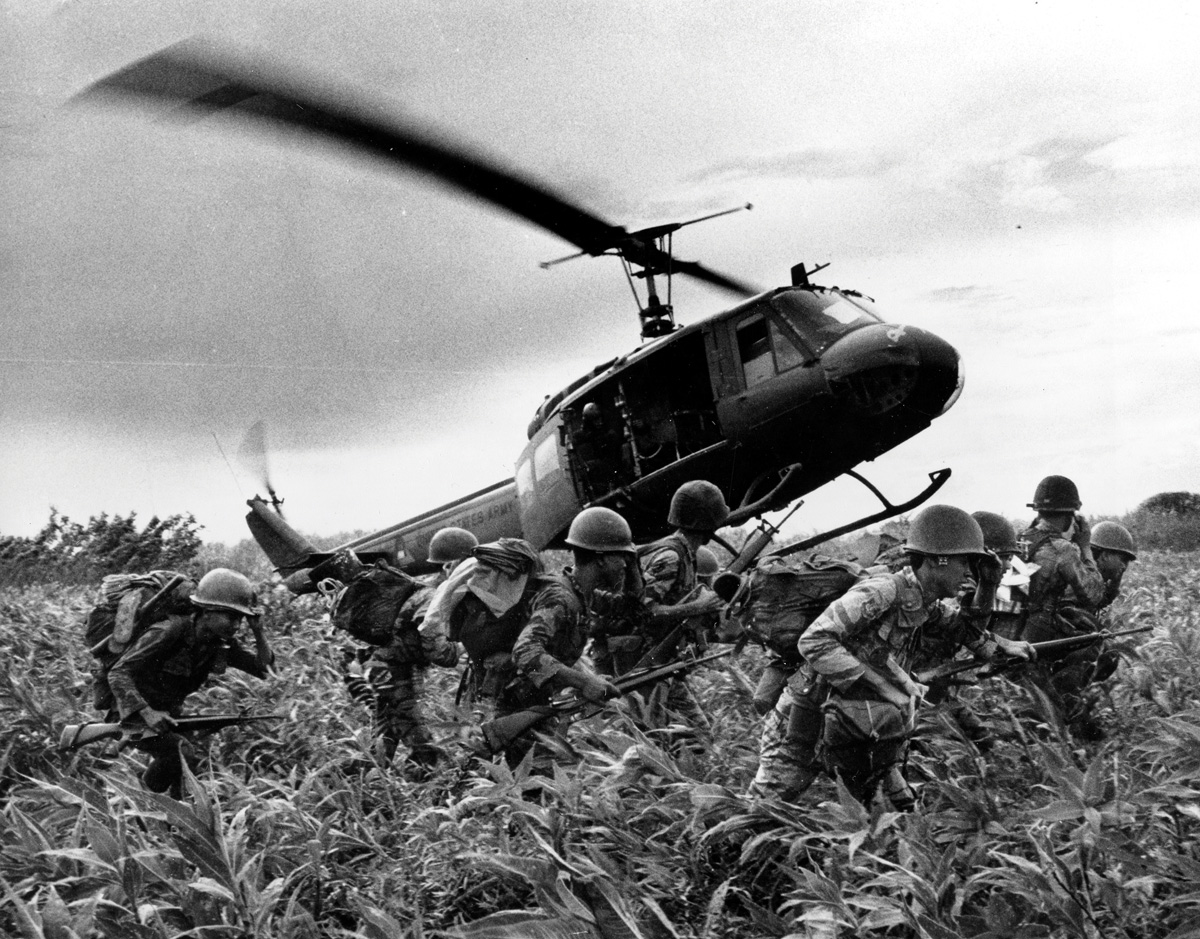
The answer to that question—indeed, the heart of the Nieman Fellowships—lies in MacLeish’s rumination in 1978 that Fellows are transformed into individuals who have “enlarged themselves. They haven’t just pulled in knowledge … they are bigger than they were.” They’re not disdainful of what they learn; in fact, they eagerly ask for seconds.
Nieman Fellows “haven’t just pulled in knowledge ... they are bigger than they were”
What Conant and MacLeish created, with the help of Walter Lippmann, was an echo of the propulsive spark of the lyceum movement in America’s nineteenth century: the idea that all enlightenment is valuable, even if its utility to a specific job is not immediately apparent, even if it doesn’t result in a promotion or a pay raise. And the aforementioned labor reporter—his name was Edwin A. Lahey, and he was a member of the fledgling Nieman Class of 1939—was a marvelous writer who possessed an “insistent curiosity” and a “gift for pungent expression,” as Louis M. Lyons, Lahey’s classmate who succeeded MacLeish as curator, delicately described it. Lahey read everything he could get his hands on, inhaled lectures by the likes of Felix Frankfurter and Granville Hicks, argued and listened and learned, and treated his Nieman year as a movable feast, regularly dipping into its riches for the rest of his life.
Nieman Foundation Curators
1938–present
Archibald Macleish: 1938 – 1939
Louis M. Lyons, NF ’39: 1939 – 1964
Dwight E. Sargent, NF ’51: 1964 – 1972
James C. Thomson Jr.: 1972 – 1984
Howard Simons, NF ’59: 1984 – 1989
Bill Kovach, NF ’89: 1989 – 2000
Bob Giles, NF ’66: 2000 – 2011
Ann Marie Lipinksi, NF ’90: 2011 – present
As diverse as were the backgrounds and interests of the first seven years of Fellowship classes, they were strikingly similar in one crucial respect: All were white men. The group photos from those early years—staged gatherings of middle-aged individuals with shy grins, standing awkwardly in their rumpled suits and oversized topcoats—show it with relentless clarity. The first female Nieman Fellows were Mary Ellen Leary and Charlotte FitzHenry, selected for the Class of 1946. A year later the first African-American Fellow, Fletcher P. Martin, was chosen. These milestones came despite the misgivings of Conant. Pressed by Lyons to include women, the shocked president said, “Why, you serve whiskey at these Nieman dinners, don’t you? Let’s not complicate it. It’s going all right, isn’t it?”
In 1951, the Fellowship pool was expanded once again, this time to include international Fellows. The Nieman program is now regarded as an essential training ground for journalists in places wrenched and energized by political upheaval, in places in which the idea of a free press is still dauntingly new.
Kovach was the freshly minted curator in 1989 when he traveled to Berlin to address journalists in the formerly divided country. “The wall had just come down,” he recalled. “We witnessed the first conference between East and West German journalists. East Germans didn’t know how a free press worked—they were used to government giving them the news. How would they go out and get the news?”
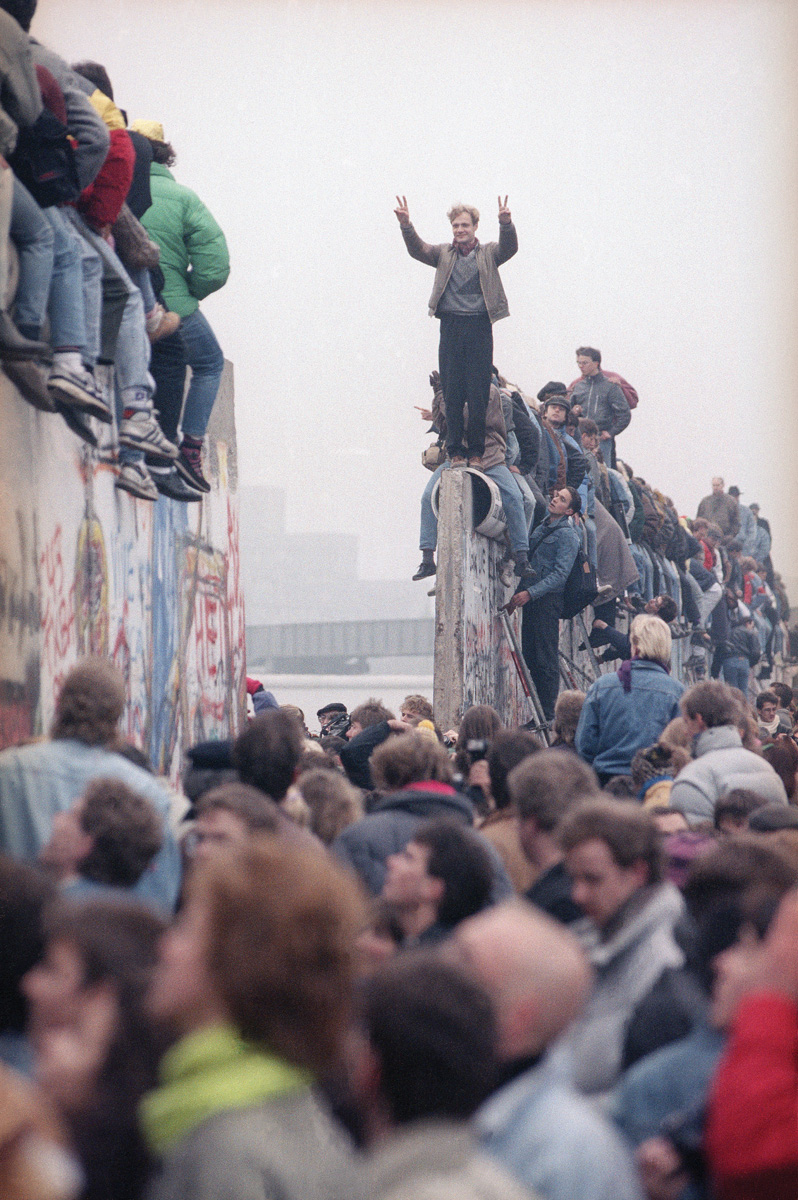
International Nieman Fellows often are at the forefront of efforts to maintain a free press in some of the most volatile areas of the world.
Many of those journalists face peril—including the possibility of imprisonment or death—for so doing. After his Fellowship year ended in 1995, reporter and editor Kemal Kurspahic continued to publish Oslobodjenje, a Bosnian daily newspaper in Sarajevo, during the bloody siege that ripped his country asunder. Peruvian journalist Gustavo Gorriti, a 1986 Fellow, was undeterred by threats and intimidation as he reported on the connection between government officials and drug traffickers in his homeland. Chronicling the long struggle for racial and economic justice in South Africa has been the task of a succession of international Fellows, including Allister Sparks, Zwelakhe Sisulu, and Joseph Thloloe.
For them and for their colleagues across the globe, the Nieman program has served as more than just a professional sanctuary—important as that is—for those whose determination to tell the truth has angered powerful and entrenched interests. It has been a restorative reminder of aspects of the human condition that transcend language and borders. “Journalism is intimately connected with human beings,” writes J.S. Tissainayagam, a 2011 Fellow from Sri Lanka who spent two years in jail and another six months in safe houses as punishment for reporting on a repressive regime, before arriving in Cambridge. “And, however hardnosed a newshound might be, to go out day after day and document people requires sensitivity and perception into human aspirations, joy and suffering. So offering a platform to journalists to share the vicissitudes in their own lives, in a community of sympathetic souls, is to offer sensitive people a chance to grapple with their own emotions, which, in turn, will nourish their desire to document those of others.”
For Colombian journalist Hollman Morris Rincón, another 2011 Fellow who also knows the look and feel of a prison from inside a cell, his invitation to come to Harvard made his audience reckon anew with his work and its moral seriousness—and influenced fledgling journalists: “On one hand, it was telling the world that my reporting was respected and had credibility. And on the other hand, it showed journalism students that profiling the weak and exposing barbarism through reporting had rewards, such as being chosen for the world’s most prestigious fellowship for journalists.” He and his family were profoundly changed by their time in Cambridge, he says: “We came back to life.”
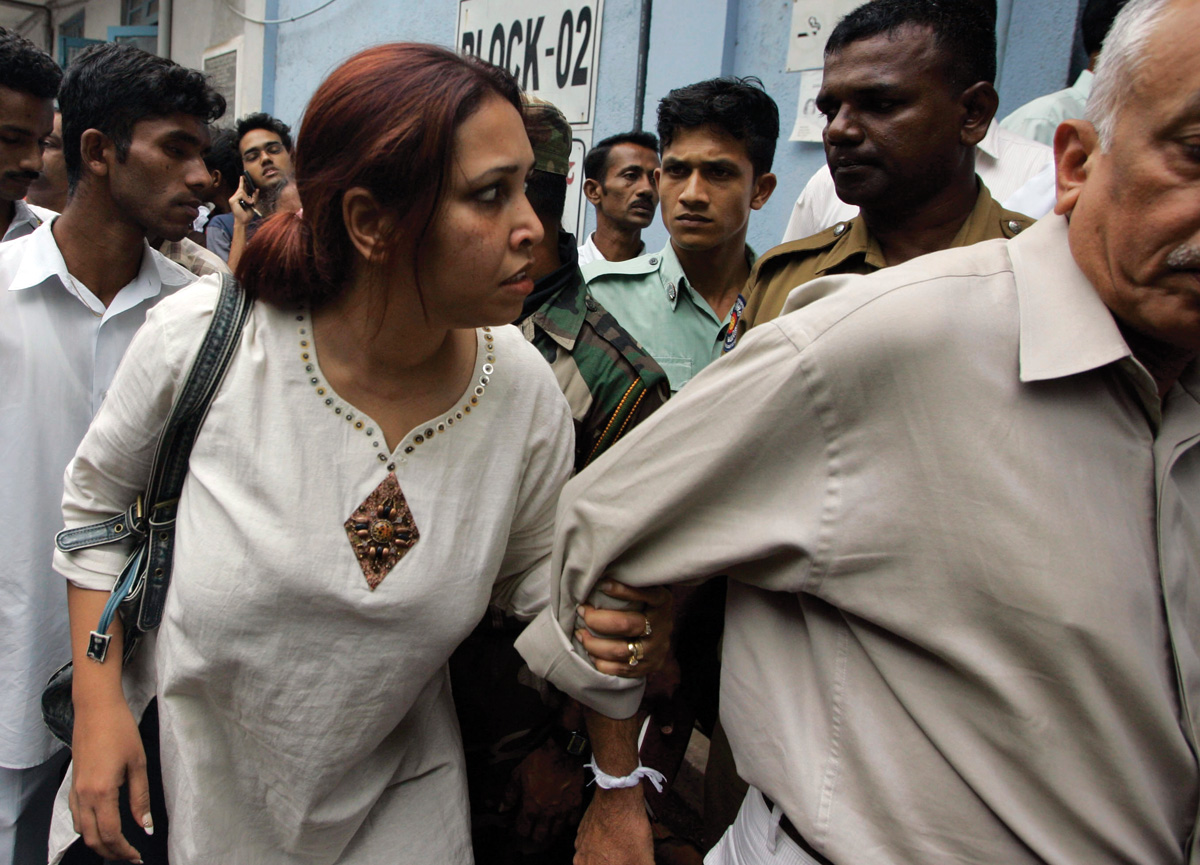
In the United States, Fellows have taken what they learned at Harvard and returned to their hometowns and helped shape coverage of the landmark events of the twentieth century, from World War II to the Vietnam War to the quest for civil rights legislation to the women’s movement—as reporters, yes, but also as editorial writers and commentators. The late Harry S. Ashmore, a 1942 Fellow who hailed from Greenville, South Carolina, won the 1958 Pulitzer Prize for Editorial Writing for his essays on school integration in Little Rock, Arkansas. The late A.B. Guthrie Jr., a 1945 Fellow, son of a small-town newspaper editor, used his time at Harvard to complete the switch from journalism to fiction-writing; the novel he began during his Nieman year, “The Big Sky” (1947), pioneered a more realistic and environmentally conscious depiction of the American West in popular fiction. His next novel, “The Way West” (1949), won the Pulitzer Prize for Fiction.
“However hardnosed a newshound might be, [reporting] requires sensitivity”
So how does it work? How does a year spent taking courses on Tennyson and Browning—or anything else that a university with a breadth and depth as immense as Harvard offers and that a Fellow might be audacious enough to undertake—and reading and thinking and attending luncheons and lectures sponsored by the Foundation make a difference professionally and personally?
“There is a sensibility we all share about the experience, but every individual Fellowship is unique,” says Ann Marie Lipinski, Class of 1990, who became curator in 2011 after leading the Chicago Tribune for seven years. “No two fellowships are the same. You ask yourself—what are those things without which I cannot leave Harvard? And you have to be open to serendipity, too.” She compares the Fellowship year to work on an important story: “There is a core search—but what you find along the way can really surprise you.”
Charlotte Bauer, a 1998 Fellow from Johannesburg and now a freelance writer, describes her Fellowship year as “being drip-fed an intoxicating combination of Gloria Steinem, Boston coffee cake, Amartya Sen, bagels and Noam Chomsky at every Nieman sighting, Sounding and soiree … My Nieman year woke up that part of my brain sagging under the churn of headlines and deadlines rather than fresh perspectives and sparkling ideas. It made me more confident about taking risks and more attuned to the importance of giving younger colleagues a hand up the ladder.”
For Howard Berkes, also in the Class of 1998 and rural affairs correspondent for NPR, the Fellowship never ends. “For me,” he says, “there was no leaving Cambridge and Lippmann House behind … Kovach and the Nieman year are there with me [still]. Pushing me. Challenging me. Providing a grounded center and mission. I always know where I am because of where I’ve been.”
RELATED ARTICLE
A Gift Beyond Measure
By Bob Giles
That sense of a perpetual Fellowship is just what Bob Giles, curator from 2000 to 2011, sought to promulgate during his tutelage, he says. “It’s a transformative experience that the Fellows have and it opens up all sorts of horizons for them—from what they learn in Harvard classrooms to the network of associations they build with Harvard faculty. The Nieman family has an extraordinary influence.”
Yet the stately towers of Harvard, for all of their venerable magnificence, cannot block the tornadic insistence of change—and no journalist would want them to. Journalism is ravenous for action, not stasis. As the profession is rocked by the economic instability of newsgathering organizations and by systemic technological change, the Nieman Foundation is finding creative ways to cope—and even flourish.
“We’re wrestling with larger issues now and it does feel urgent,” Lipinski says. “But the concern about the future of journalism goes way back. This generation thinks of it as their unique burden—but deep care over the craft and the industry, and making it better, is a constant thread throughout the past 75 years.
“Deep care over the craft and the industry, and making it better, is a constant thread throughout the past 75 years”
She points to the addition of short-term Visiting Fellowships—such as the one held by Paul Salopek, just before he embarked on a walking journey dubbed Out of Eden Walk, a seven-year, approximately 21,000-mile journey to trace the spread of human civilization from Africa. And the Foundation recently published its first multimedia e-book, “The Gates of Harvard Yard,” by Blair Kamin of the Class of 2013.
There is a dynamic, evolving quality to the Fellowship—and it was ever thus. “I felt an obligation not only to myself and my work,” muses Lipinski about her time as a Fellow, “but to something larger—and it was instilled in me by that mysterious and exhilarating and inspiring thing called the Nieman year.”
The Fellowship, then, does for a journalist’s world what Einstein’s special theory of relativity did for the world at large: upends it, turning everything upside-down and then right-side-up again—and when it lands, it points toward truth.
In his most famous poem, “Ars Poetica” (1926), the first Nieman curator, Archibald MacLeish, wrote, “A poem should not mean/But be.” Substitute the phrase “Nieman Fellowship” for “poem,” and you get a sense of the protean nature of the program, of the vigor and restlessness simmering within the journalists it brings to Harvard each year, ready to hit that rarified ground running, defined as much by the motion itself as by the destination.
Julia Keller, NF ’98, won the 2005 Pulitzer Prize for Feature Writing. Her new novel, “Bitter River,” was published in September
